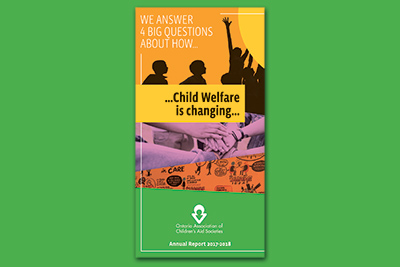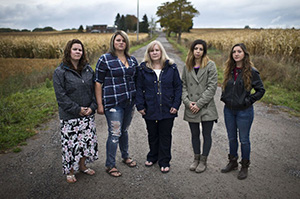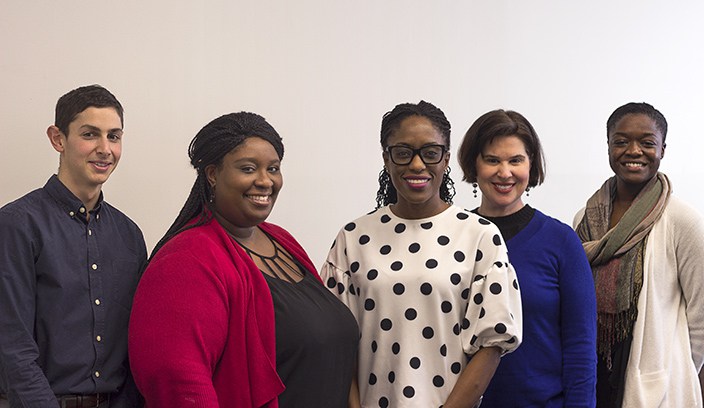we answer 4 Big Questions about how Child Welfare is changing...
...and our transformation toward a reimagined system continues.
With our 2012-2017 Strategic Plan now at a close, read some of the highlights of our change initiatives from the past year.
To see how we’re continuing to build on these changes, be sure to read our 2018-2023 Strategic Plan.
Looking back & moving forward
This past fiscal year marked the final year of our 2012-2017 Strategic Plan. It’s an appropriate time to take stock of our accomplishments while recognizing and planning for the work that remains. For the past five years, OACAS with its member Children’s Aid Societies, embarked on an ambitious—and necessary—change agenda. Most of the accomplishments outlined in this year’s annual report are the result of several years of hard work involving hundreds of child welfare professionals.
The impetus for many of these changes comes either directly from children, youth, and families we serve or from those who advocate on their behalf. They have consistently expressed their need for child welfare services to be offered equitably across Ontario, for improved outcomes for the most disenfranchised and marginalized communities, for Children’s Aid Societies to become better integrated into the broader children’s services system, and for greater transparency and accountability.
Our 2012-2017 Strategic Plan focused on addressing these concerns. Through our three mission pillars of leadership, advocacy, and service excellence, OACAS and its member agencies led and supported significant changes in these four strategic areas: system leadership and partnerships; public confidence and accountability; Reconciliation with Indigenous communities; and strengthening capacity.
This annual report sets out to answer four broad questions that capture our accomplishments in these areas. Yes, we’ve made progress, but we acknowledge there remains a great deal of work to be done before we achieve our vision.
We feel confident the work we did this year is solid bedrock on which to continue building a reimagined child welfare system. As always, we are grateful for the dedication over 8,000 child welfare professionals in this province show to children, youth, families, and communities every day.
Mary Ballantyne
OACAS Chief Executive Officer
Margaret Bowman
OACAS Board Chair
1.
Are we acting like a system?
We’ve made a strong start.
We have heard from families, provincial stakeholders, inquest reports, and the media, that the child welfare system is fragmented and is inadequately integrated with the broader children’s services system. Over the past few years, we’ve been addressing this through several provincial initiatives, and this year we realized significant milestones.
- As a sector, agencies across the province implemented and systematically evaluated progress in addressing the Recommendations coming out of the Jeffrey Baldwin and Katelynn Sampson Inquests.
- The Shared Services Program launched, with 37 agencies participating, which will help build sector capacity, improve service quality, consistency and performance, and reduce costs.
- We collaborated on shared advocacy with Children’s Mental Health Ontario and Ontario Association of Children’s Rehabilitation Services towards the shared goal of improving outcomes for children, youth, families, and communities.
- For the first time, Children’s Aid Societies began systematically sharing information about group homes to provide a better standard of care for children and youth.
2.
Have we increased public
confidence in child welfare?
Yes, but work remains
to be done.
We have heard from families, provincial stakeholders, inquest reports, and the media, that the child welfare system is fragmented and is inadequately integrated with the broader children’s services system. Over the past few years, we’ve been addressing this through several provincial initiatives, and this year we realized significant milestones.
- Children’s Aid Societies have continued the important work of transparency through the public reporting of performance indicators.
- Every agency has developed a Quality Improvement Plan, to improve their ability to meet the Ontario Child Protection Standards.
- Every new frontline worker received the same provincial-level training before being authorized to do child protection work.
- Our provincial Dress Purple campaign successfully engaged schools and their boards and provided online resources to support teachers to engage in age appropriate conversations about child abuse and neglect with children grades JK to 5 (a key Baldwin Inquest recommendation).
- OACAS developed and executed a multi-pronged election strategy with eight key asks to all parties to better support children, youth, and families.
3.
Have we made progress on Reconciliation?
We are on the path, but the journey must continue.
For several years, in recognition of the legacy of residential schools and the Sixties Scoop, non-Indigenous child welfare agencies have been building relationships with Indigenous communities and transitioning the responsibility of the provision of child welfare services.
- OACAS, on behalf of all non-Indigenous agencies, acknowledged and apologized for the harmful role child welfare has played historically, and continues to play, in the lives of Ontario Indigenous children, youth, families, and communities.
- Children’s Aid Societies have made nine Reconciliation Commitments, which include: reducing the number of Indigenous children in care, increasing the use of customary care, providing good access to information requested by individuals affected by the Sixties Scoop, and continuing to develop relationships between their agency and the local Indigenous communities.
- Our training program for new workers contains greater content focused on working with Indigenous families and communities and we continue to deliver Indigenous-focused workshops across the province.
- OACAS and local Children’s Aid Societies have supported the transition of services to two newly designated Indigenous Child and Family Services agencies this year.
Read more about...

- Child Welfare Apologizes to Indigenous Families and Communities
- A Moment on the Path Film
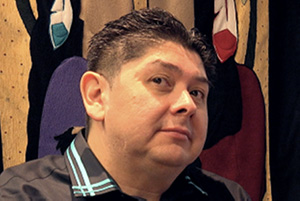
- Taking their children back: The journey to designation for Nogdawindamin Family and Community Services

- Providing culturally appropriate child and family services for Indigenous children
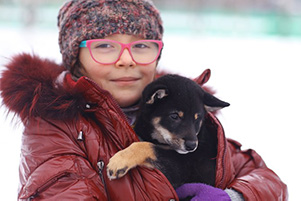
- 4 things you should know about the child welfare sector’s commitments to Reconciliation
4.
Have we strengthened our capacity to do the work?
We have, and we continue to identify areas where we need to be stronger.
We know that to realize trans-formation, we must let go of old ways of doing things, and embrace new ideas. This year, we changed the way we work with each other, and started implementing programs and practices to change the way we serve children, youth, and families.
- One Vision One Voice, a program led by the African Canadian community through OACAS, is implementing practices that address the overrepresentation and experiences of disparities faced by African Canadians in the child welfare system.
- In partnership with Ontario’s CASs and OACAS, Peel Children’s Aid Society opened Ontario’s first Child Welfare Immigration Centre of Excellence which will provide expert knowledge and services to CASs.
- Thirty Children’s Aid Societies are now using the Child Protection Information Network (CPIN), a transformational system that gives caseworkers across the province seamless access to the information they need to do their jobs.
- Children’s Aid Societies adopted a new Decision-Making Framework and new Strategic Councils aimed at guiding provincial-level work for the sector.
